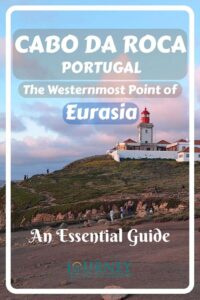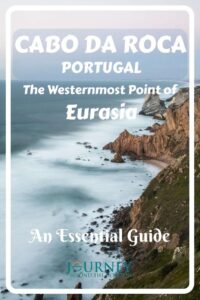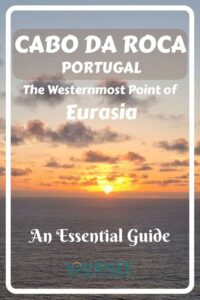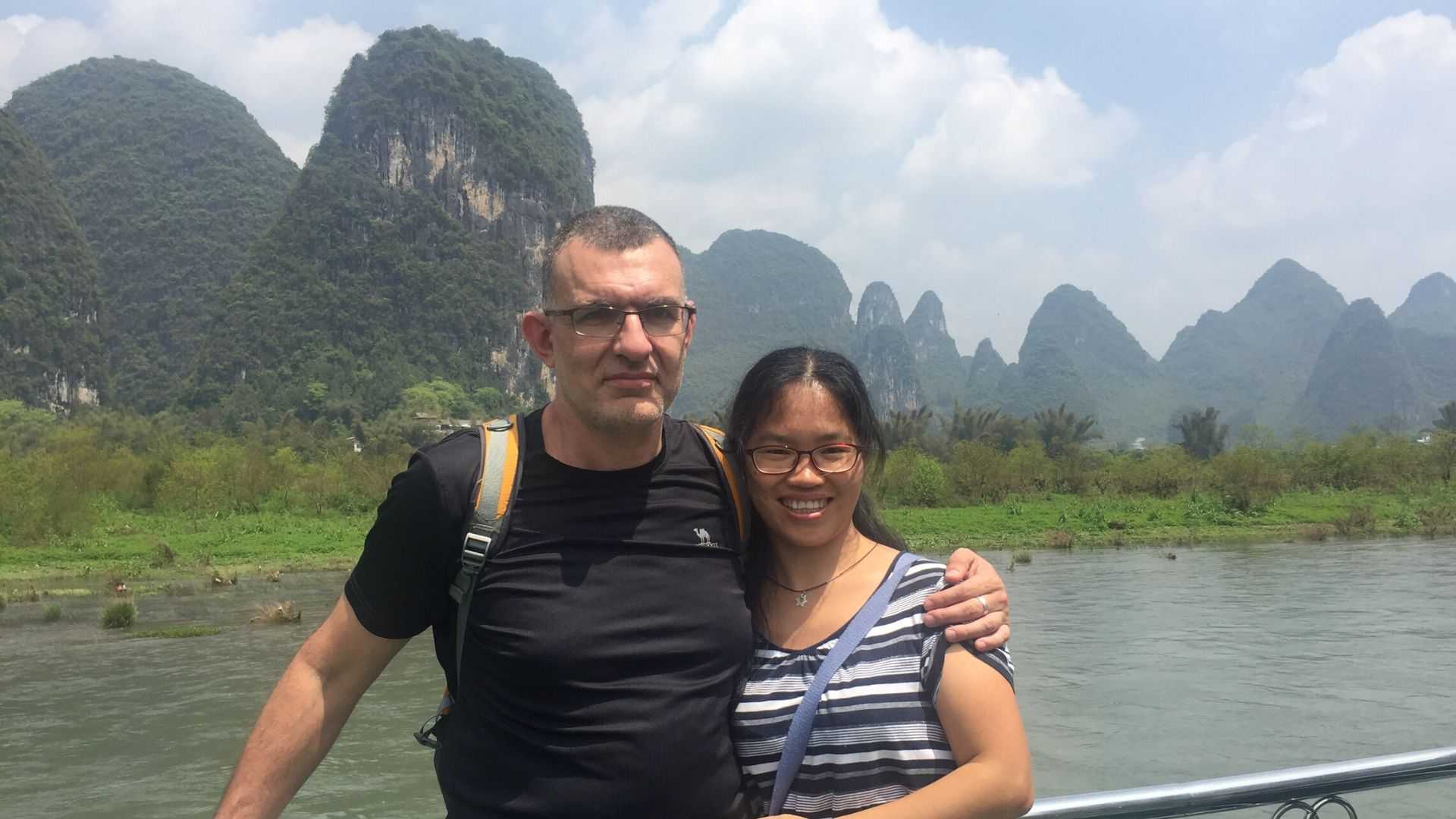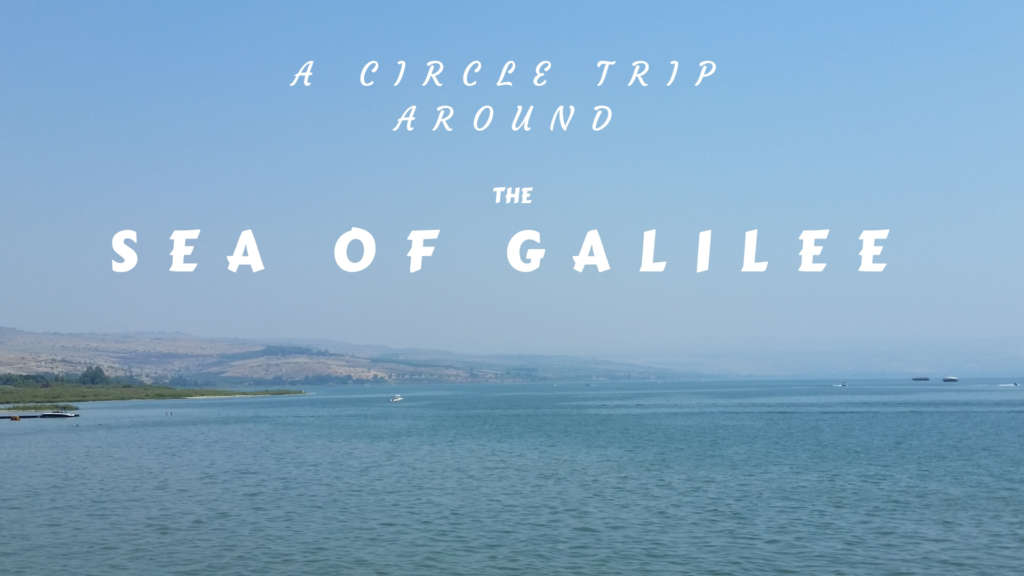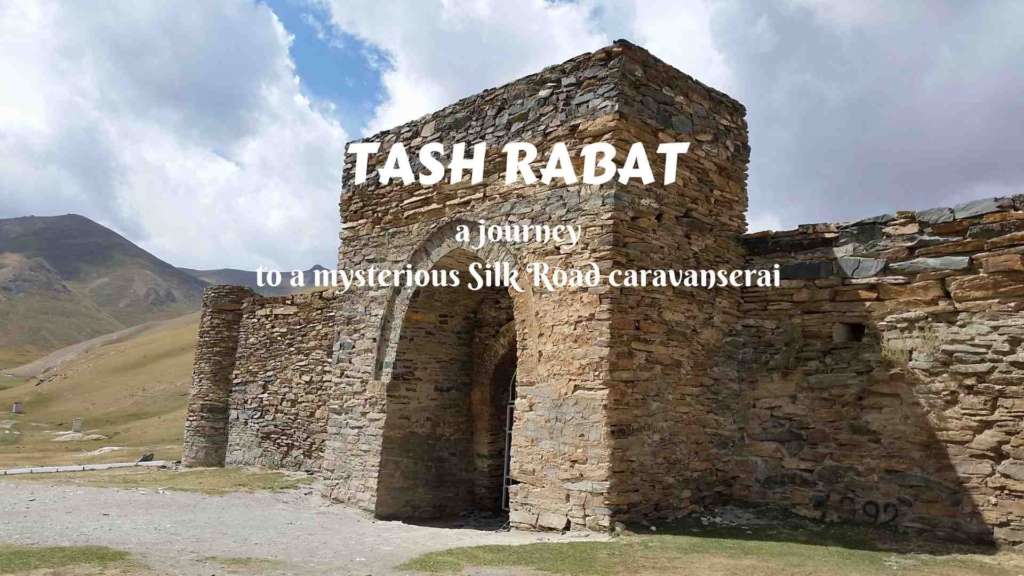Imagine standing at the very edge of a continent, where the land meets the vast Atlantic Ocean in a dramatic way. That’s precisely the experience awaiting you at Cabo da Roca, Portugal – the official westernmost point of mainland Europe and Eurasia. More than just a geographical landmark, this rugged headland offers breathtaking panoramas and a profound sense of discovery. In this essential guide, we’ll cover everything you need to plan your visit, from its fascinating geography and how to get to Cabo da Roca, to the best things to see and do, and why this iconic cape serves as the perfect symbolic starting point for a grand adventure across Eurasia.
Table of Contents
Basic information about Cabo da Roca
Let’s first start with the well-known popular tourist information: Cabo da Roca is located in Portugal and it is the westernmost point of Europe and the Iberian Peninsula. It has beautiful sunsets and spectacular views of the Atlantic Ocean.
This is true, and that’s what attracts most of the tourists who visit the nearby Sintra to visit Cabo da Roca too. Yet this place is still far less popular than the attractions in Sintra. Actually, many visitors to this part of Portugal don’t have a clear idea, apart from the beautiful views, why they should come to this geographical point.
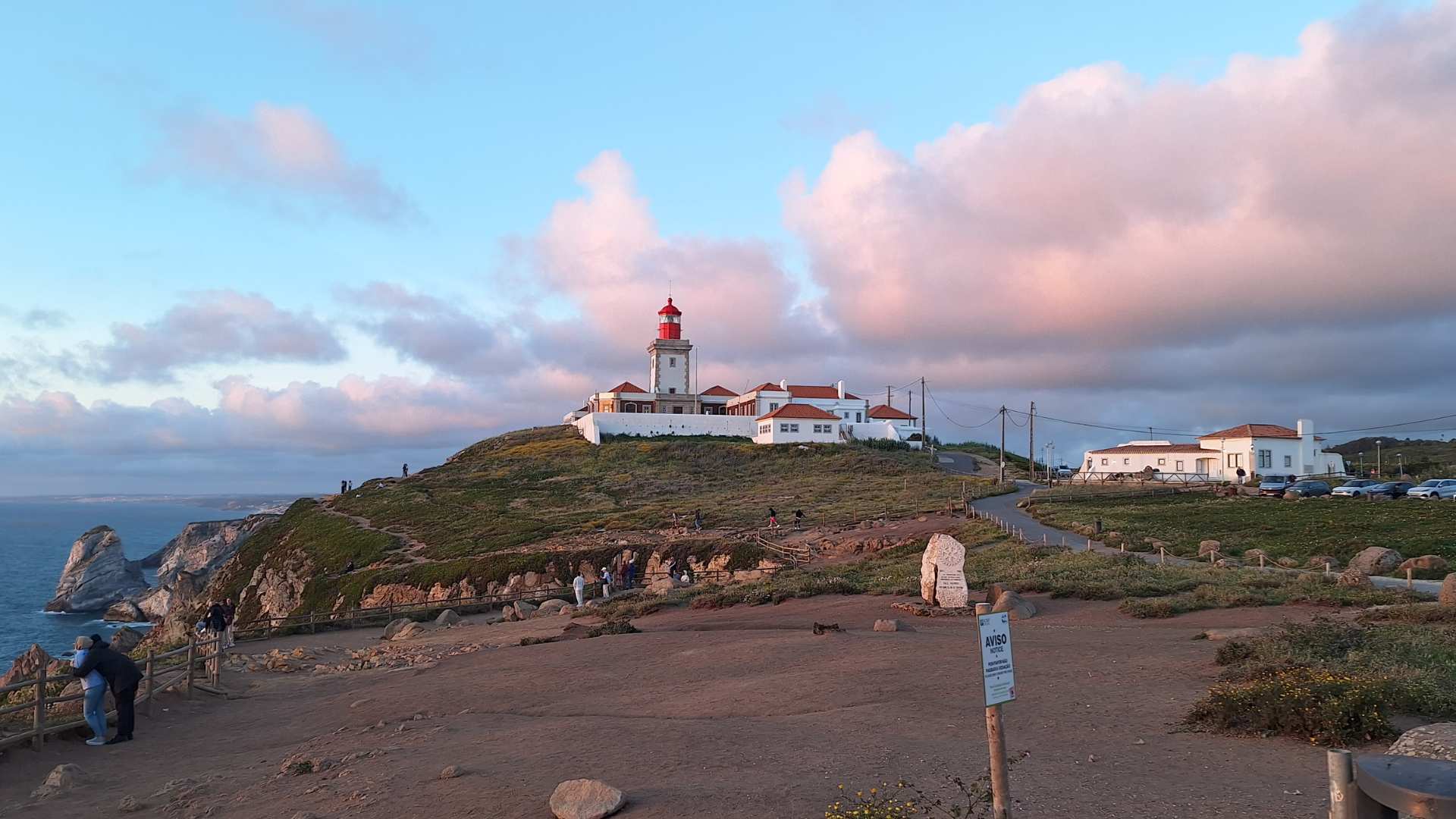
Some geography
To get a full impression and “taste” of Cabo da Roca, and to realize the significance of this special place, you must love geography. So, let’s open the map of the world…
Europe and Asia?
Everybody knows about the two continents of Europe and Asia. But do you know that they are not continents at all, at least not physically full, complete continents?
Take a look at the map again. You can easily notice the largest landmass on the Earth. It stretches from the Atlantic Ocean to the Pacific Ocean. This landmass contains the “continents” of Europe and Asia. But if you try to identify the exact boundary between them on the map, you will find it unclear and challenging.
This is because “Europe” and “Asia” are only cultural and political (in other words- “human-invented”) continents. No wonder the definition of the exact boundary between them has varied during history.
But the real, physical continent that contains “Europe” and “Asia” is this huge landmass, and it is called Eurasia. Actually, Africa is also a part of it but because it is connected to Eurasia only by a tiny isthmus (like North and South America- two physically clearly formed continents), we can consider it a different continent.
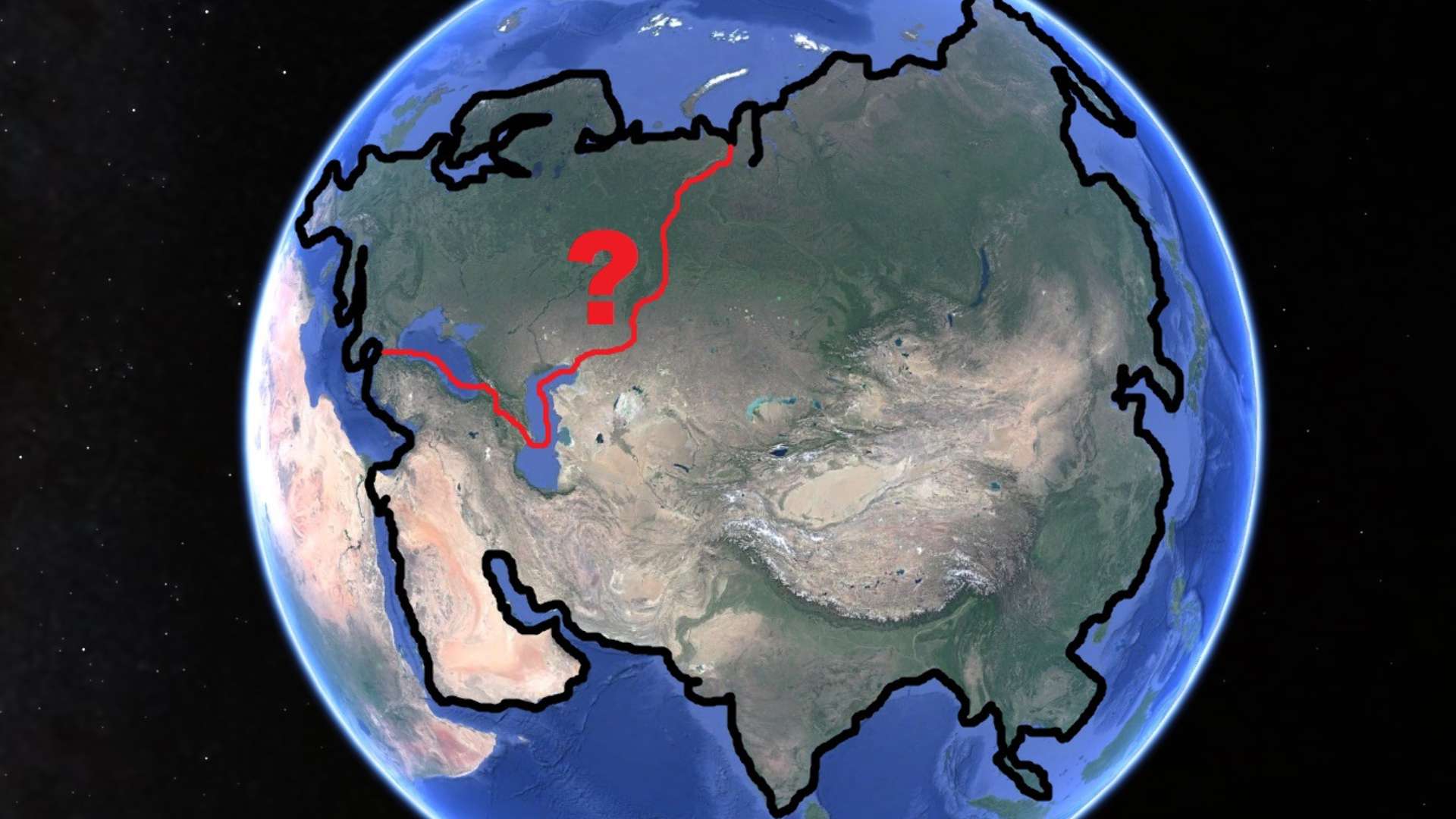
The westernmost point of Eurasia
So yes, Cabo da Roca is the westernmost point of Europe, but if we want to be more specific and correct, it is the westernmost point of Eurasia. The other three extreme points of the continent are Cape Chelyuskin (the northernmost point), Cape Dezhnev (the easternmost point), and Tanjung Piai in Malaysia (the southernmost point).
In other words, if you stand in Cabo da Roca and look at the ocean, there will be no Eurasian mainland west of you but only a vast ocean stretching to America, far beyond the horizon. This is a point of a special beginning or a special end.
 Exploring the Earth is fantastic! However, there are various hidden dangers that may ruin your journeys. Don’t allow that to happen, or at least reduce the consequences as much as possible!
Exploring the Earth is fantastic! However, there are various hidden dangers that may ruin your journeys. Don’t allow that to happen, or at least reduce the consequences as much as possible!
Include a travel insurance as a part of your trip preparation by pressing the button below:
What to do in Cabo da Roca
So, you reach Cabo da Roca “armed” with geographical knowledge. Now, your visit can be fuller, more meaningful, and more impressive. Here is what you can do once you arrive here.
A good paved road from road N247 leads to Cabo da Roca. It ends in front of the Lighthouse with a parking lot and a square, used as another parking lot. This is your starting point for the things you can do, “celebrating” the end or the beginning of Eurasia.
The Marker
This is the most important geographical point here- the westernmost point of the cape itself. It is a monument with a coat of arms pointing out that this place belongs to Portugal and the geographical information about the place below and above the coat of arms. The monument is crowned with a cross above.
And here is what the important information of the marker says:
Latitude: 38°47 Norte (North)
Longitude: 9°30 Oeste (West)
The marker is erected on a platform above the cliffs of the cape. There is a stone fence at the edge of the platform, and this is the westernmost exact point where you can reach, with a fantastic panoramic view of the endless Atlantic Ocean.
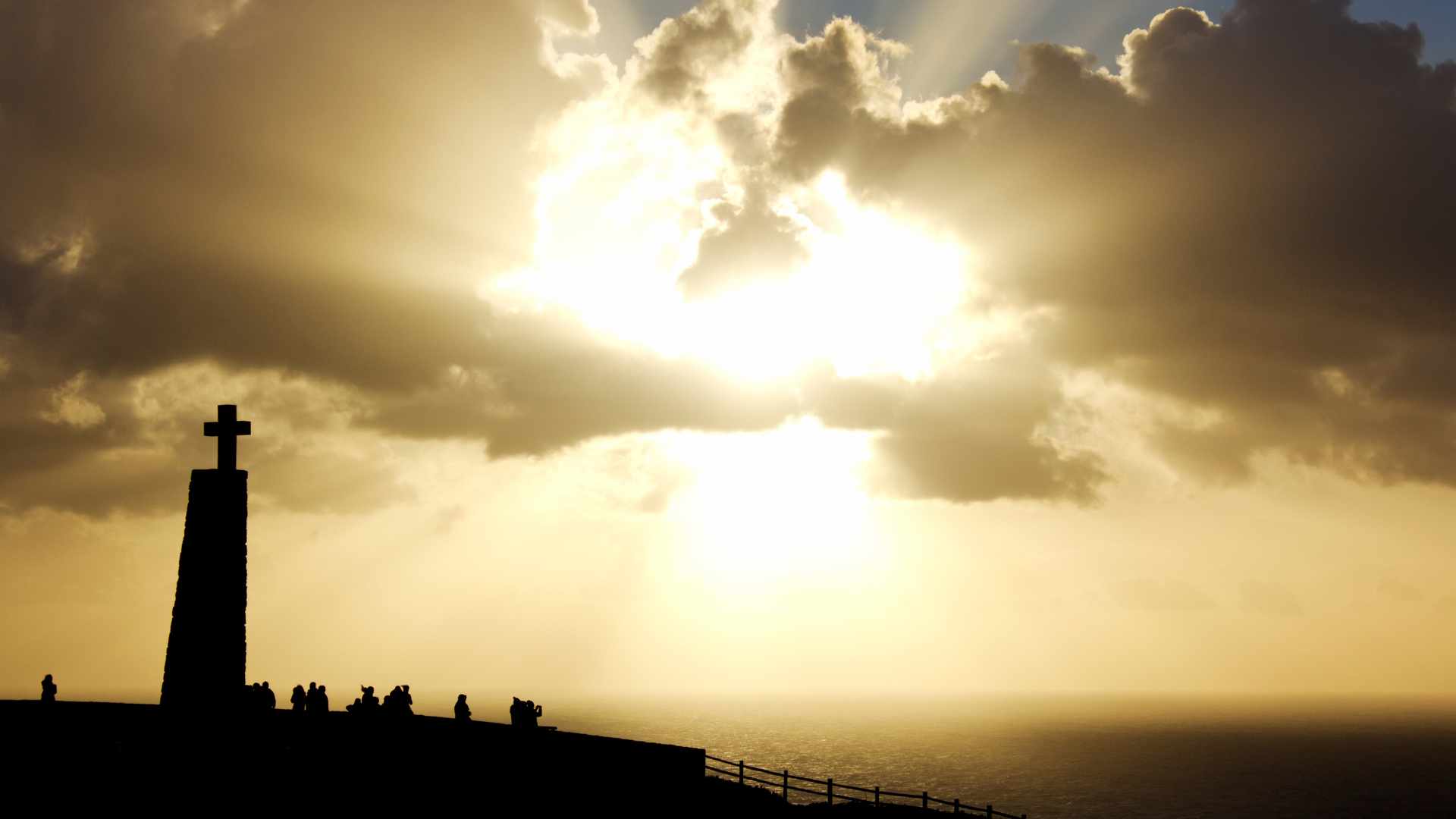
The sunset
This is one of the main attractions here, in Cabo da Roca. If you have good weather, try to arrange your trip to this iconic place before evening, to catch the sunset. Sunsets are beautiful everywhere on the Earth but here, keeping in mind the specific geographical significance of Cabo da Roca, the sunset has a special meaning. And the best and most emblematic place to observe it is exactly here, at the stone fence in front of the marker.
The Lighthouse
Although it is not exactly at the westernmost point, this is the most prominent construction in the area of Cabo da Roca and is the westernmost building in Eurasia. This was the idea behind its location- it is not the westernmost but it is in a higher place than the marker which is much more useful.
The lighthouse was built in 1772. It is one of the oldest continuously working lighthouses in Portugal and since its establishment, it has been renovated many times with newer technology.
Today, you can walk in the alley in front of the Lighthouse, and on special occasions, you can even enter inside by an organized tour. But in general, it is considered more as a working facility rather than a tourist attraction.
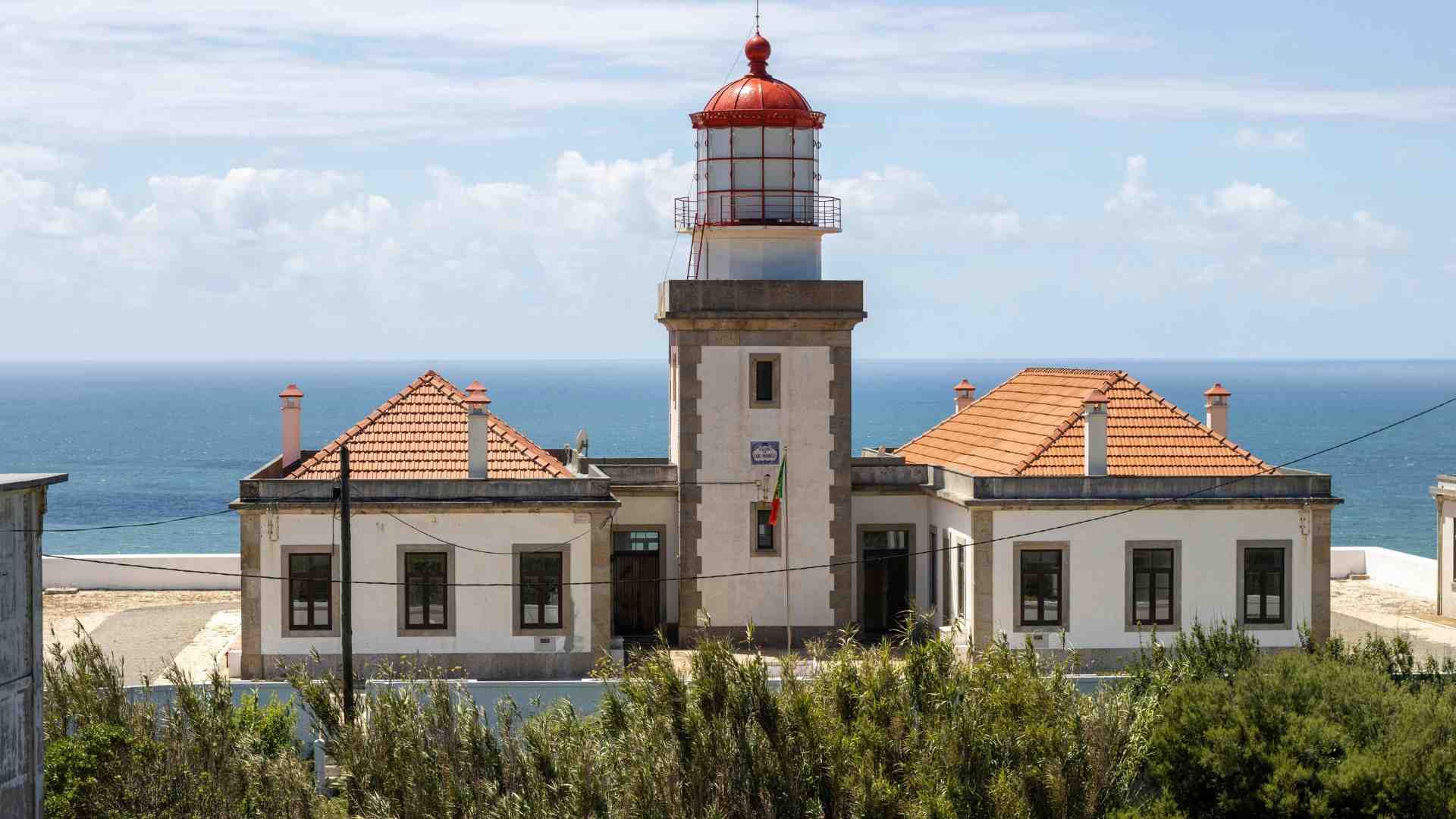
The Tourist office and the restaurant
The Tourist office is located between the parking lot and the square. Its main purpose is to provide some information to the people who want to know more about the geography and history of Cabo da Roca. In addition, here you can get a special certificate witnessing that you have visited the westernmost point of Europe. You can also buy some small souvenirs and go to the toilet inside.
On the other side of the square, there is a simple restaurant-bar, called Restaurante Artesanato Bar. It is working only from 9:30 am to 7:00 pm, from Tuesday to Sunday (Monday closed), and offers only some simple food and drinks.
Praia do Louriçal
The name of this place in Portuguese means Lourical Beach, and it is another “westernmost point” around Cabo da Roca- this is the westernmost beach in Eurasia. Actually, it is not a “normal beach” with sand but it consists of large oval stones. There are also some beautiful rock formations emerging from the water in front of the beach.
Praia do Louriçal is reachable for about 10 min from the Marker of Cabo da Roca on a steep trail winding downward. Be careful in the lowest section of the trail- it is very steep (there is a rope for climbing assistance installed on the rocks). At the same time, there is a small beautiful waterfall beside the trail.
This beach is not a proper place for swimming- it is rocky and rugged, and if the ocean is rough (and it almost always is), better to stay away from the water.
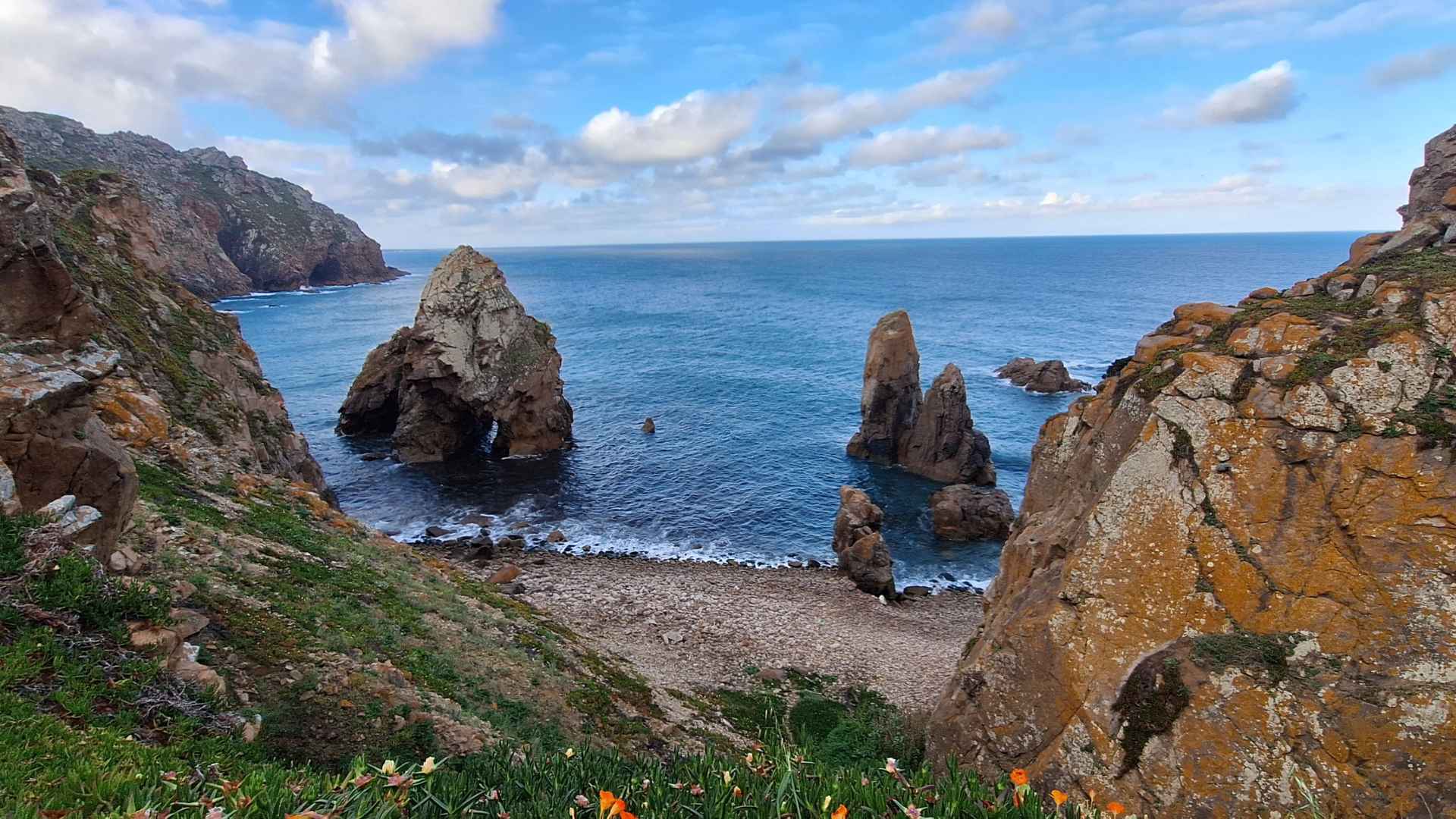
The westernmost sandy beaches of Eurasia
So, where is the westernmost real (sandy) beach in Eurasia? It is called Ursa Beach (Praia da Ursa) which means “Bear Beach”, and it is located north of Cabo da Roca. The beach is small and incredibly beautiful, surrounded by cliffs, and again with rugged rock formations emerging from the water.
To reach Ursa Beach, you have to walk on the main road to Cabo da Roca for about 1 km, then turn left on a dirt road for another 1 km. From there, only steep trails descend on the rocky slope to the beach. You can swim here but again, be careful! This beach is wild and unguarded. Rough waters can be very dangerous!
There are more small and beautiful sandy beaches further north, but if you want to find a larger beach, you have to search it in the opposite direction- south of Cabo da Roca. This is Praia do Guincho.
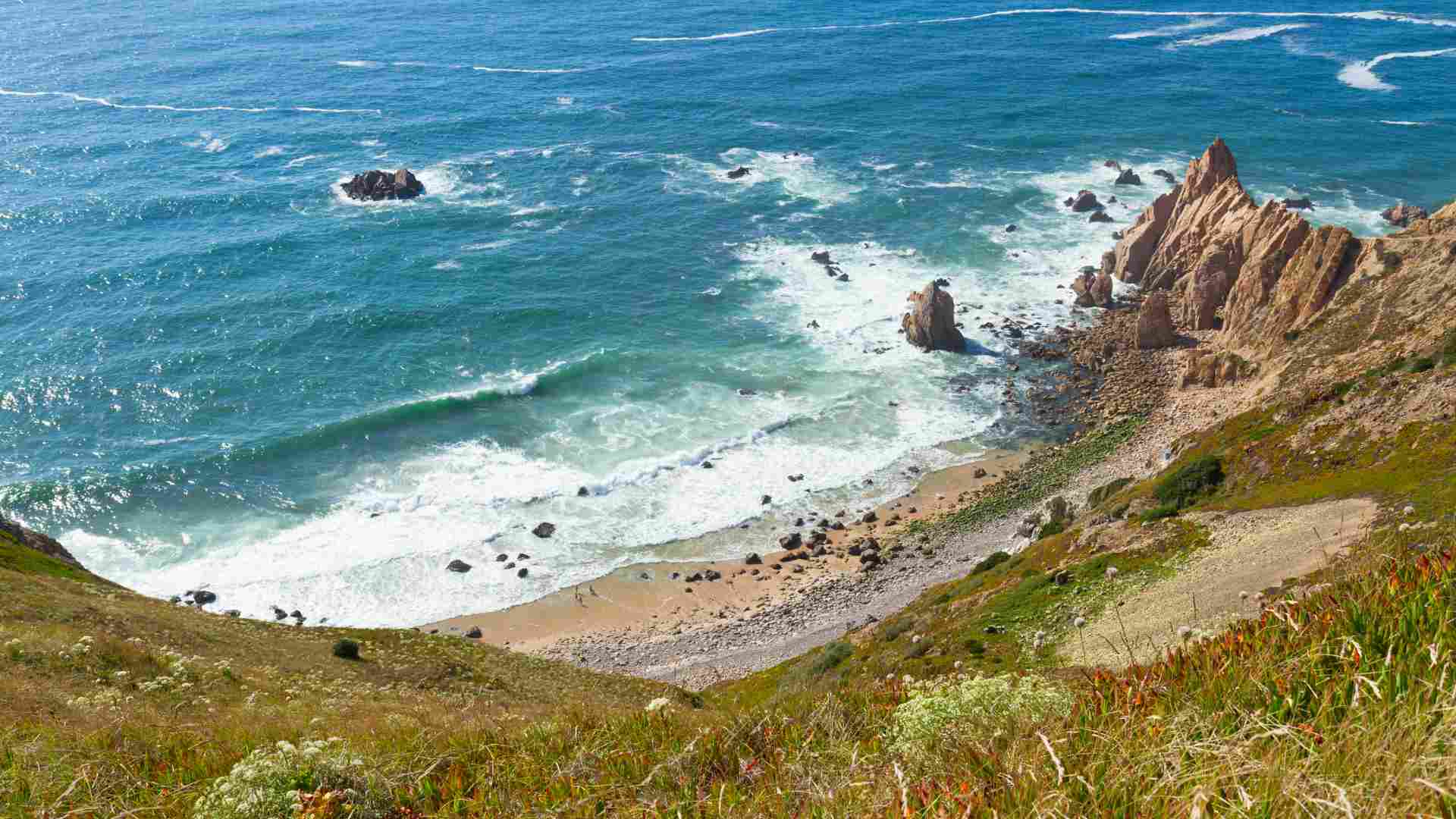
Praia do Guincho
This beach is not too long (but longer than the beaches mentioned above), however, it is wide. The beach is located in another type of terrain and instead of cliffs it is surrounded by dunes- actually, they are a part of the beach.
There are two hotels beside the beach, as well as surf and kite surf schools- Vasco da Gama Surf Academy, Mowzes Surf School, and Gustykite Kitesurfing School. There is also a surf shop. Indeed, this beach is excellent for wave surfing, kite surfing, and windsurfing due to its specific conditions- constant strong winds and good swell- normally between 2 and 4 m tall waves.
Go to a surf camp in Praia do Guincho!
Praia do Guincho is easily accessible by a good paved road- it is located about 11 km south of Cabo da Roca. And if you proceed a bit further, you will reach another cape, called Cabo Raso. It marks the northern end of the gulf where the Tagus River flows into the ocean.
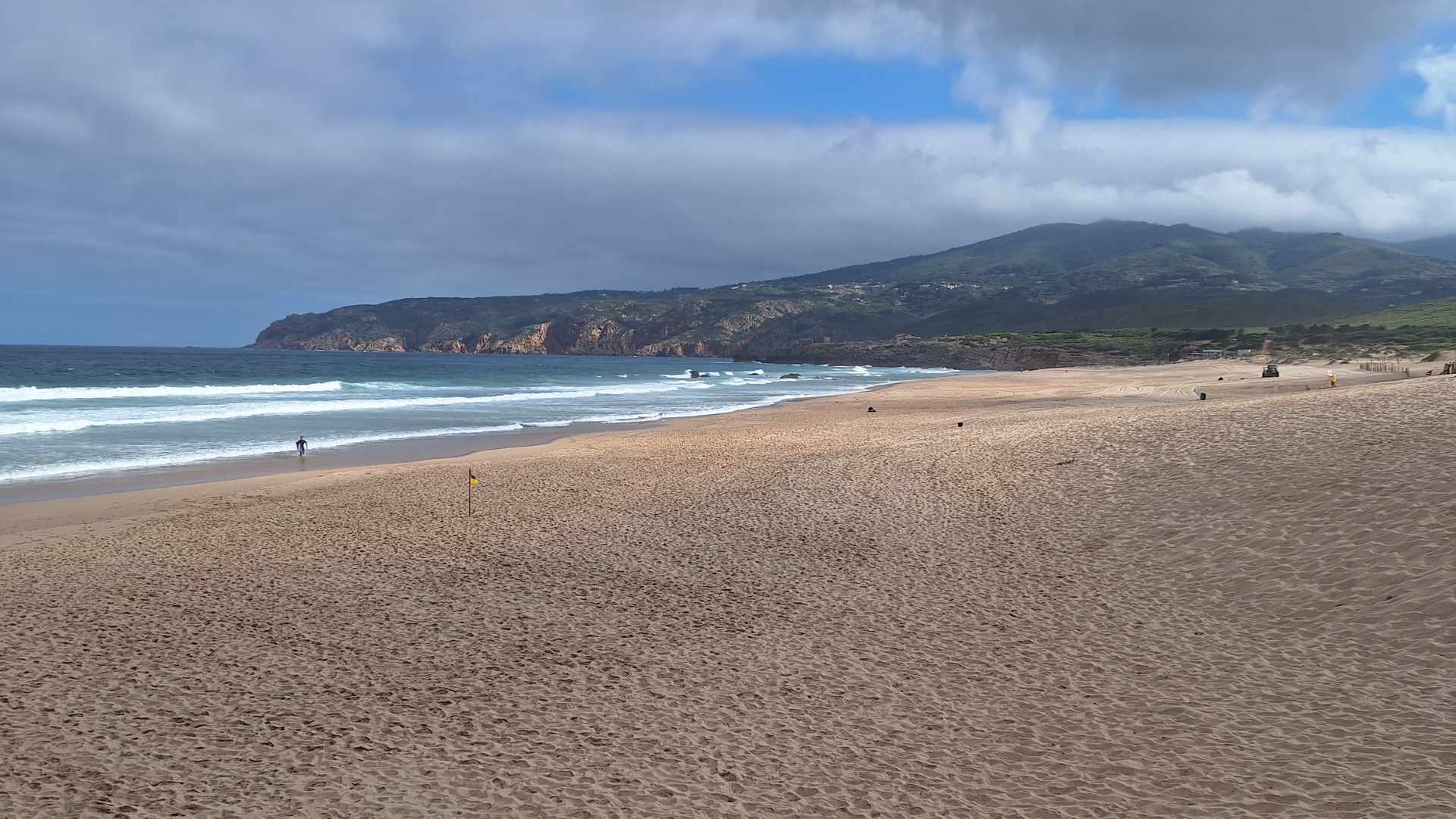
How to get to Cabo da Roca
Although many visitors of Cabo da Roca are not fully aware of the geographical significance of Cabo da Roca, it is still a popular tourist place, regularly visited by tourists. There is a good paved road that leads to the cape and reaching the place with your own transport- car, motorhome, motorcycle, or bicycle, is easy and convenient.
But if you don’t have your own transport, there is public transport, and there are organized tours too.
Cabo da Roca from Sintra and Cascais
Sintra and Cascais are the main starting point for visiting Cabo da Roca, especially Sintra since it is much more popular than Cascais.
Two regular buses are traveling approximately every 30 min between Sintra, Cascais, and Cabo da Roca.
- Bus 1624. Its route starts from Sintra and ends in Cascais. On the way, the bus goes to Cabo da Roca and then returns to the main road to Cascais. Price from Sintra or Cascais to Cabo da Roca: 4,30 EUR.
- Bus 1253. This bus travels on a circular route that connects Sintra and Cabo da Roca (it doesn’t go to Cascais but is more tourist-oriented, with more scenic views on the way). Price: again 4,30 EUR.
Cabo da Roca from Lisbon
There is no direct transport from Lisbon to Cabo da Roca. First, you have to travel to Sintra or Cascais from Lisbon. There are trains from Rossio Station in Lisbon to Sintra (2,40 EUR) and from Cais do Sodré Station to Cascais (again, 2,40 EUR).
Organized tours
There are a lot of organized tours in the area between Lisbon and Cabo da Roca. Most of them are focused on the best places to see in this area, including Sintra’s Pena Palace, The Moorish Castle, and many more, and Cabo da Roca is only one of their stops. But you can also find tours specifically focused only on Cabo da Roca and the close area around it.
Take a look below and choose a tour:
Although such tours are more touristy, not in the style of some adventurous travelers, at least they are a convenient option if you don’t have too much time, provide a lot of information, and you can meet some new travel friends.
Weather in Cabo da Roca
Cabo da Roca is located in an area with clear oceanic subtropical climate. There is no big difference between winter and summer. It is extremely unlikely to see snowfall in winter, and it is never too hot in summer. And it is almost constantly windy. Sometimes less windy and sometimes very windy or stormy, adding to the whole dramatic atmosphere of the place. So, prepare yourself with proper clothes accordingly!
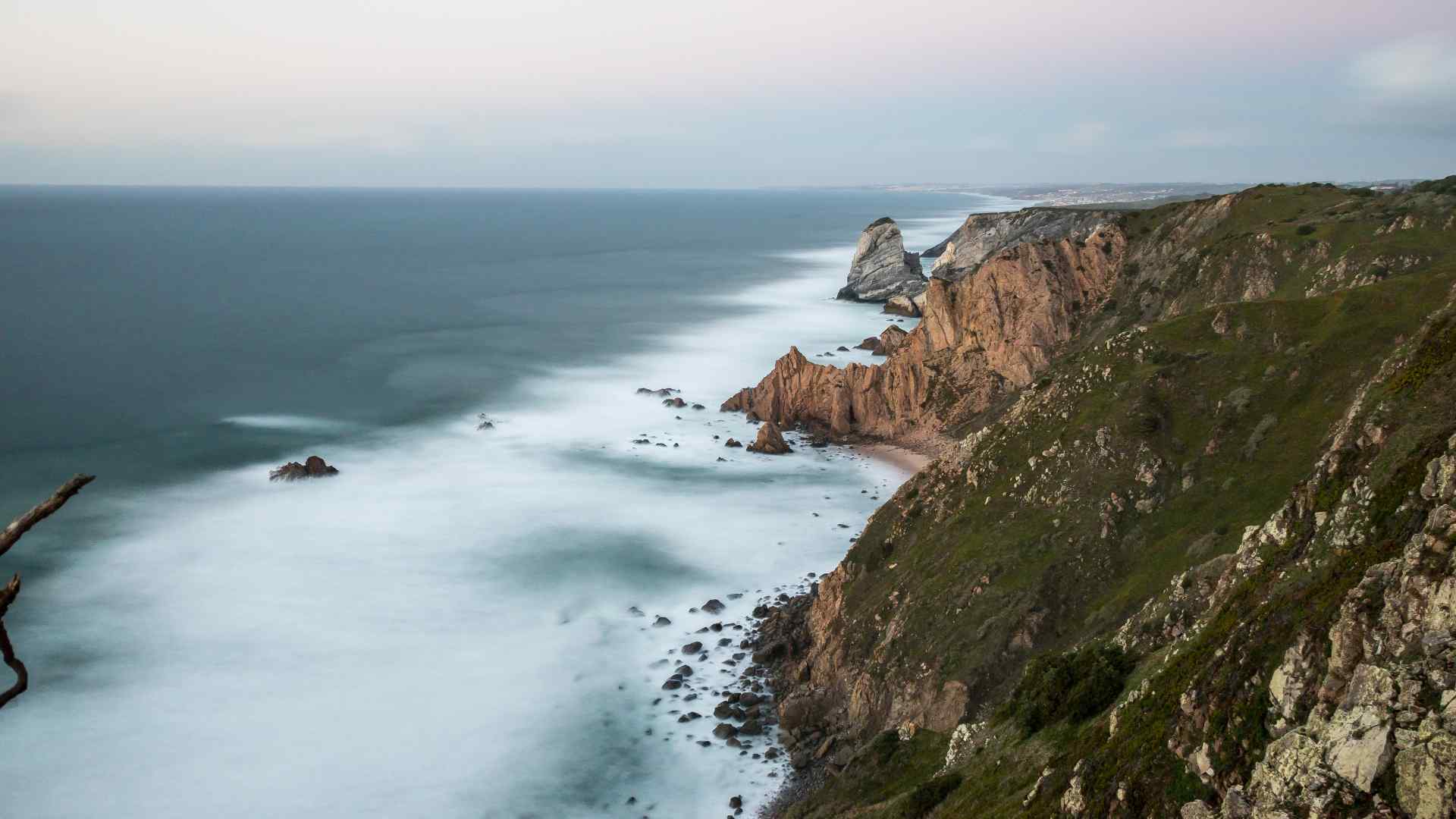
Cabo da Roca as a starting point for a Crossing Eurasia journey
Now, this is the last but probably most significant reason to visit Cabo da Roca, if you are a loving geography traveler.
The beginning of my journey
I (Krasen Jelyazkov) have always dreamed of crossing a whole continent from end to end. And I have always seen Eurasia as a whole continent (not “Europe” and “Asia”). Indeed, Eurasia is the largest continent on Earth, and crossing it from west to east (in this case, eastward is my favorite direction) certainly would lead a traveler through a rich chain of various lands, images, tales, sceneries, cultures, and experiences.
Not everybody can cross Eurasia at once (including me) but there is an option- segmented traveling. In other words, making a short trip (2-3 weeks) from point A to point B on the main route, then back home. Let’s say, a few months later, go on the next trip, returning to point B (the last point of the previous trip, now becoming the first point of a new trip) traveling to point C, and so on.
I planned my first segment of a crossing-Eurasia trip, from Cabo da Roca, Portugal, to Nice, France. I arrived in Madrid by plane and rented a car. And I wanted to travel by my own (or rented) transport to choose my own schedules and routes.
When I got the car, I moved immediately to Cabo da Roca, explored the place, and started traveling on my route across Eurasia, destination by destination. When I reached Nice, I quickly back to Madrid and dropped off the car, then returned home. After that, I started preparing for the next segment of my route.

Exploring Cabo da Roca before the beginning of a Crossing-Eurasia journey
So, if you plan such a journey, find your own transport (more convenient than using public transport), and go to Cabo da Roca. Try to get there before evening and watch the sunset! As mentioned above, here the sunset is not just beautiful but also full of geographical and adventurous meaning.
After sunset, you can wait until it’s dark. Watch the lights of the Lighthouse and enjoy the silence, dominated only by the never-ending winds. Then, if you come by car or motorhome, you can spend the night inside (as I did). Or, you can move to the nearby villages and resorts, or to Sintra, where you can find a lot of guesthouses and hotels like Quinta do Cabo Guesthouse, Quinta Vale da Roca, Casa Buglione, Charm Nature, and more.
Check for hotels around Sintra on Booking!
Check for hotels around Sintra on Agoda!
In the morning, back to Cabo da Roca again. If you come early morning, before arriving of the tourist crowds, the place will be almost empty- you will see only a few people- some adventurous travelers (they are always a minority!) and local Lighthouse workers.
Enjoy the morning views from the cape, and descend to Praia do Louriçal. Then, you can start your epic journey to the East across the continent. But on the way, don’t leave the Atlantic Ocean immediately! Visit Ursa Beach and Praia do Guincho- the spectacular sceneries of these two places are worth enjoying too!
After that, you can leave the ocean and penetrate the interior of Eurasia. The next immediate destination is Sintra, and then Lisbon– places always worth exploring, no matter if you are an ordinary tourist or an adventurous traveler. Dive into geography- it is always an epic fairy tale!
Take a look at this video about Cabo da Roca below:
Like it? Pin it here⇓! Follow us in Facebook, X and Instagram!
